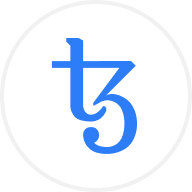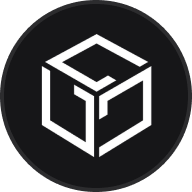Sandbox est un monde virtuel décentralisé basé sur la blockchain Ethereum où vous pouvez créer, partager et monétiser des actifs et des jeux en voxel. Sandbox est une plateforme basée sur Ethereum axée sur le play-to-earn (P2E), dont les créateurs visent à offrir une expérience immersive de métavers sans autorité centralisée.
Les jeux de construction de mondes virtuels basés sur les voxels traditionnels tels que Minecraft sont des jeux centralisés où les utilisateurs n'ont pas de propriété sur leurs créations ou le gameplay. Sandbox résout ce problème en permettant aux joueurs de construire et de monétiser des expériences de jeu sur la blockchain Ethereum.
Contrairement aux jeux traditionnels où les actifs en jeu existent sur le serveur de la société respective, chaque objet dans le métavers Sandbox est un jeton non fongible (NFT) librement échangeable sur la blockchain Ethereum, donnant à l'utilisateur une propriété complète de l'objet en jeu. Ainsi, les créateurs dans The Sandbox ont une véritable propriété de leurs créations grâce à ces NFT. De plus, ils sont récompensés pour leur participation avec SAND, le jeton d'utilité du réseau.
Depuis que l'écosystème de The Sandbox est alimenté par la blockchain Ethereum, toutes les exécutions de smart contracts, les transferts de NFT, les transactions de cryptomonnaie et la conservation des registres sont facilités par le réseau Ethereum. Cela se fait via trois produits principaux qui alimentent ces fonctions pour aider les utilisateurs à créer leur monde virtuel. Ce sont VoxEdit, Marketplace et Game Maker.
VoxEdit est un package de modélisation de voxel gratuit qui permet aux utilisateurs de créer et d'animer des objets 3D. Ces objets peuvent ensuite être exportés vers le marché de The Sandbox en tant qu'ACTIFS en jeu. Le Marketplace est un magasin en ligne qui met en relation les acheteurs et les vendeurs échangeant des jetons d'actifs (Asset NFT). Il permet aux utilisateurs de télécharger, publier et vendre leurs ACTIFS sous forme de jetons ERC-721 et ERC-1155.
Enfin, Game Maker permet aux utilisateurs d'ajouter des mécanismes de gameplay à leurs actifs de voxel via des nœuds de script visuels, leur permettant de créer une expérience de jeu engageante sur leur parcelle de TERRAIN achetée. Les utilisateurs peuvent également utiliser Game Maker pour placer des actifs de voxel sur leur TERRAIN Sandbox. Le TERRAIN peut également héberger des concours et des événements, monétiser des actifs, jouer et créer des jeux, voter dans la gouvernance du métavers Sandbox et mettre en staking des jetons SAND. Il y a un maximum de 166 464 TERRAINS disponibles.
SAND: le jeton natif de The Sandbox
SAND est un jeton ERC-20 utilisé pour les transactions au sein de la plateforme, entre autres choses. Les joueurs dépensent du SAND pour accéder et jouer à des jeux, acheter des équipements et personnaliser leurs avatars. Le SAND peut également être utilisé pour acheter des actifs et des terrains.
Un autre jeton natif du métavers Sandbox est le jeton ASSET qui peut être acheté et vendu avec du SAND. Les utilisateurs peuvent créer et vendre des jetons ASSET sur le Marketplace en tant que NFT représentant des objets en jeu.
Le SAND fonctionne également en tant que jeton de gouvernance. Les détenteurs peuvent voter sur les décisions concernant l'avenir de The Sandbox via l'organisation autonome décentralisée (DAO) de la plateforme.
Le SAND peut également être mis en staking, ce qui permet de générer des revenus passifs. De plus, les jetons SAND en staking peuvent également générer des rendements sous forme de Gemmes et de Catalyseurs précieux, qui sont utilisés pour la création d'ACTIFS.
Prix du SAND et tokenomie
Le SAND est un jeton déflationniste avec un approvisionnement fini de 3 milliards. Sur l'approvisionnement total, 360 millions de SAND ont été alloués à la vente de lancement, 17,8 % ont été conservés pour le tour de financement initial, et 4 % des jetons SAND ont été distribués lors d'une vente stratégique en juillet 2020.
Du reste de l'approvisionnement en SAND, 12 % des jetons ont été donnés à la Fondation Sandbox, 25,82 % ont été alloués aux réserves, 19 % des jetons SAND ont été distribués aux fondateurs et à l'équipe, et 10 % des jetons SAND ont été versés aux conseillers.
L'allocation du tour de financement initial et du tour de vente stratégique comporte une période de blocage d'un an, après quoi 20 % des jetons sont débloqués tous les six mois.
Les revenus générés par The Sandbox sont répartis entre quatre parties prenantes pour assurer un soutien continu à son écosystème de joueurs et de créateurs. Ces jetons sont distribués au fonds de la fondation, au pool de staking, au trésor de l'entreprise et à la réserve de l'entreprise.
À propos des fondateurs
Le projet Sandbox a été fondé en 2012 par Sébastien Borget, aujourd'hui COO de Sandbox, et le PDG Arthur Madrid.
Construit par Pixowl, une société de développement de jeux mobiles à San Francisco, Sandbox a été initialement lancé en tant que jeu mobile 2D, téléchargé par plus de 40 millions de personnes.
En janvier 2018, Sandbox a décidé de développer une version 3D du jeu sur Ethereum. De plus, l'équipe de Sandbox voulait offrir aux joueurs une propriété à 100 % sur leurs objets en jeu et la possibilité de monétiser leur gameplay et leurs actifs. Plus tard, en août 2018, Animoca Brands, le principal développeur de jeux blockchain, a acquis Pixowl.
Pour financer leur vision, Sandbox a levé 6,8 millions de dollars lors de trois ventes de jetons en 2019 et 2020. De plus, l'entreprise a annoncé une subvention de 2 millions de dollars pour que les créateurs puissent créer et publier de l'art voxel sur la plateforme Sandbox.

















